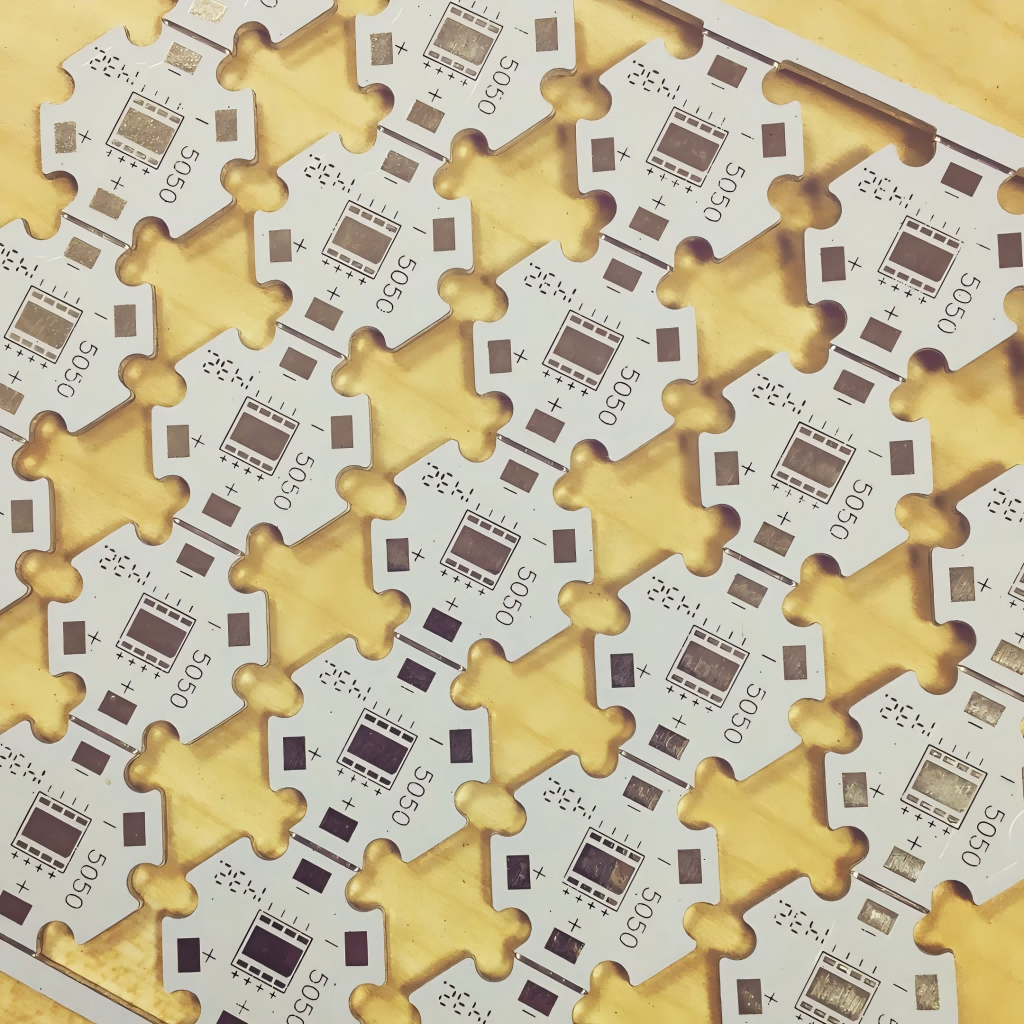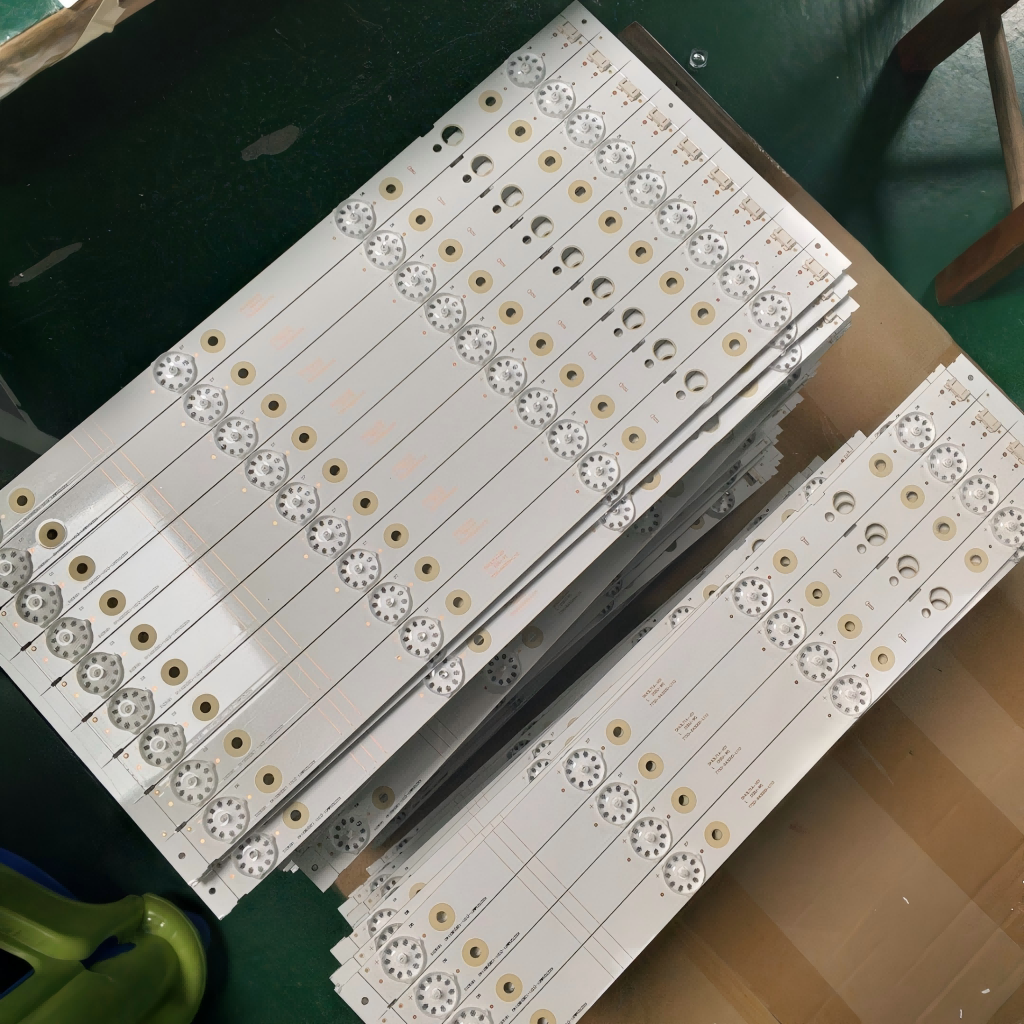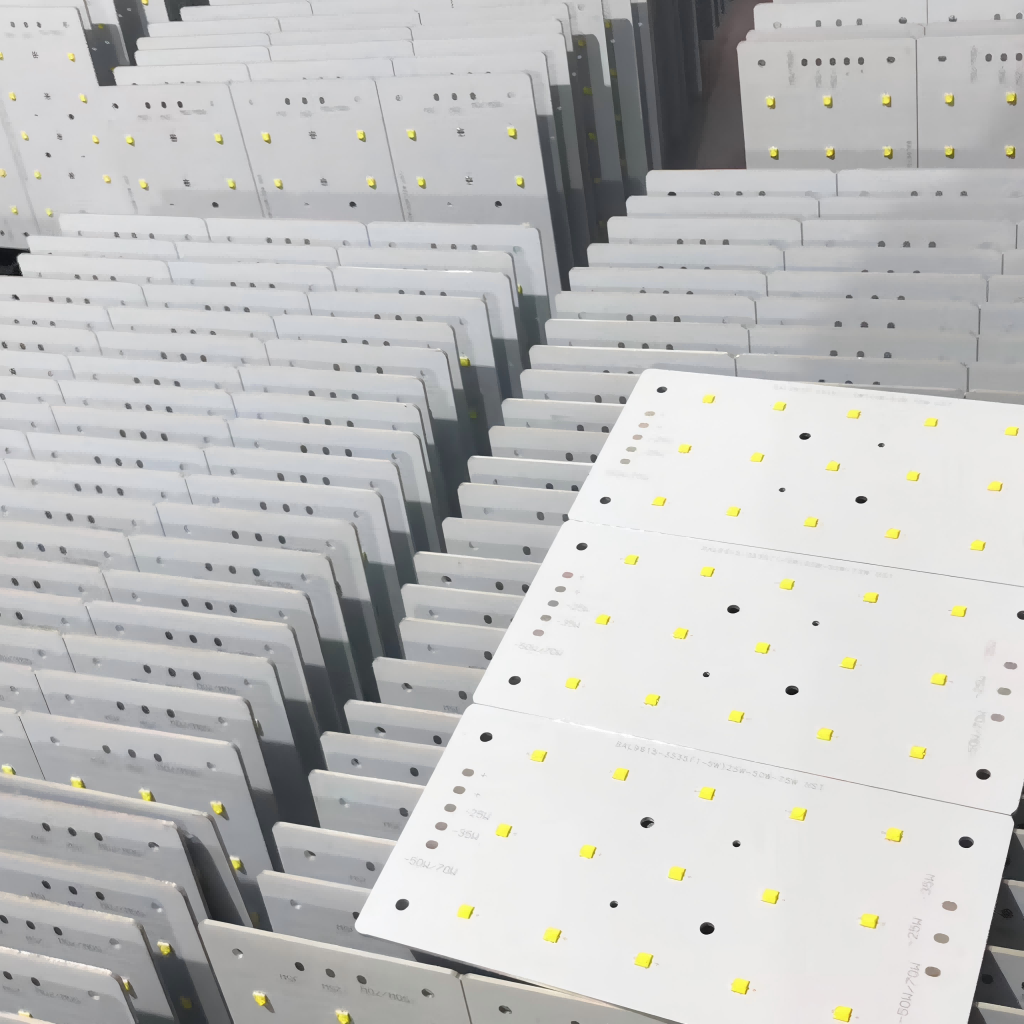What is the Aluminum PCB?
The aluminum PCB is a metal-based copper-clad board with excellent heat dissipation properties.

Layer Structure of the Aluminum PCB.
1. Circuit layer: The circuit layer (typically made of electrolytic copper foil) is etched to form the printed circuit, which is used for component assembly and connection. Compared to traditional FR-4, using the same thickness and line width, the aluminum PCB can handle higher currents.
2. Insulation Layer: The insulation layer is the core technology of aluminum PCB, primarily serving bonding, insulation, and thermal conductivity functions. The insulation layer of the aluminum PCB is the largest thermal barrier in power module structures. The better the thermal conductivity of the insulating layer, the more favorable it is for the dispersion of heat generated during device operation, thereby helping to reduce the operating temperature of the device. This achieves the objectives of increasing the module's power load, reducing its size, extending its lifespan, and enhancing power output.
3. Metal Base Layer: The choice of metal for the insulating metal substrate depends on a comprehensive consideration of factors such as the metal substrate's thermal expansion coefficient, thermal conductivity, strength, hardness, weight, surface condition, and cost.
Classification of the Aluminum PCB.
1. General-purpose aluminum-based copper-clad laminates, with an insulating layer composed of epoxy glass cloth adhesive sheets;
2. High-thermal-conductivity aluminum-based copper-clad laminates, with an insulating layer composed of high-thermal-conductivity epoxy resin or other resins;
3. High-frequency circuit aluminum-based copper-clad laminates, with an insulating layer composed of polyolefin resin or polyimide resin, and glass cloth adhesive sheets.

Differences between aluminum PCBs and FR-4 boards.
1. Thermal conductivity
The primary difference between aluminum-based copper-clad laminates and conventional FR-4 copper-clad laminates lies in thermal conductivity. When comparing a 1.5mm-thick FR-4 copper-clad laminate with an aluminum-based copper-clad laminate, the former has a thermal resistance of 20–22°C, while the latter has a thermal resistance of 1.0–2.0°C, which is significantly lower.
2. Thermal Expansion Coefficient
Due to the thermal expansion issues inherent in conventional FR-4 materials, high temperatures can cause changes in board thickness and flatness, particularly in the thickness direction, which affects the quality of metallized holes and circuits. This is primarily due to differences in the thermal expansion coefficients of the raw materials in the thickness direction: copper has a thermal expansion coefficient of 17×10⁶ cm/cm°C, while the base material of FR-4 boards has a coefficient of 110×10⁶ cm/cm°C, with a significant disparity between the two, making thermal expansion effects more likely. Aluminum PCBs have a thermal expansion coefficient of 50 × 10⁶ cm/cm°C, which is smaller than that of general FR-4 boards and closer to the thermal expansion coefficient of copper foil. This helps ensure the quality and reliability of printed circuit boards.
3. Main Applications
FR-4 boards are suitable for general circuit design and ordinary electronic products. Aluminum PCBs are suitable for circuits with special requirements, such as thick-film hybrid integrated circuits, heat dissipation for power circuits, heat dissipation and cooling of components in circuits, large-scale substrates where ceramic substrates are unsuitable, and circuits where reliability cannot be ensured using ordinary heat sinks.
4. Mechanical Processing Properties
Aluminum PCBs have high mechanical strength and toughness, which is superior to FR-4 boards. Therefore, large-area printed circuit boards can be manufactured on aluminum substrates, and heavy components can be installed on such substrates.
5. Electrical Performance
When comparing aluminum PCBs with FR-4 boards, the high thermal conductivity of metal substrates significantly increases the melting current of conductors, further highlighting the superior thermal conductivity of aluminum PCBs. The thermal conductivity of aluminum PCBs is related to the thickness of their insulating layers and thermal conductivity. Thinner insulating layers result in higher thermal conductivity (but lower voltage resistance). To ensure the performance of electronic circuits, some components in electronic products need to be protected from electromagnetic wave radiation and interference. Aluminum PCBs can serve as shielding plates to block electromagnetic waves.
6. Insulation Performance
Under normal conditions, the voltage withstand value of aluminum PCBs is determined by the thickness of the insulating layer. The voltage withstand value of aluminum PCBs generally hovers around 500V. To test the voltage withstand value of LED fluorescent lamp aluminum PCBs, simply apply high-voltage testing to the input port housing. UL and CE certification values should be 2500V, while 3C certification values should be around 3750V.
What are the advantages of aluminum PCBs?
Compared to traditional FR-4, aluminum PCBs can minimize thermal resistance, giving them excellent thermal conductivity. Compared to ceramic substrates, they also have superior mechanical properties.
In addition to excellent heat dissipation performance, aluminum PCBs also have the following advantages:
Compliant with RoHS environmental requirements.
More suitable for SMT processes.
Higher current-carrying capacity.
Effectively manage thermal diffusion in circuit design schemes to reduce module operating temperature, extend service life, and enhance power density and reliability.
Reduce the assembly of heat sinks and other hardware (including thermal interface materials), shrink product size, and lower hardware and assembly costs.
Optimize the combination of power circuits and control circuits.
Replace fragile ceramic substrates to achieve better mechanical durability.
The core technology of aluminum PCBs lies in the insulating layer material in the middle, which primarily serves bonding, insulating, and thermal conductivity functions. The insulating layer of aluminum PCBs is the largest thermal barrier in power module structures. The better the thermal conductivity of the insulating layer, the more favorable it is for the dispersion of heat generated during device operation, thereby helping to reduce device operating temperature. This achieves the objectives of increasing module power load, reducing size, extending lifespan, and enhancing power output. While ensuring excellent thermal conductivity, it must also possess high-voltage insulation capability.
Main Applications.
Lighting products, high-power LED lighting products.
Audio equipment, preamplifiers, power amplifiers, etc.
Power supply equipment, DC/AC converters, rectifier bridges, solid-state relays, etc.
Communication products, high-frequency amplifiers, filter devices, and transmitting circuits.

Summary.
When selecting circuit board materials and types, it is important to consider the specific requirements of the final product. Aluminum PCBs and FR-4 boards each have their unique advantages and suitable applications. Aluminum PCBs are suitable for high-power, high-temperature, and harsh environment applications due to their superior thermal management and mechanical strength, while FR-4 boards are widely adopted in the electronics manufacturing industry due to their cost-effectiveness and design flexibility.
By understanding these fundamental differences, PCBA manufacturers can better select appropriate materials and technologies to meet specific functional and performance requirements, thereby developing more efficient and reliable electronic products. Whether choosing FR-4 boards or aluminum PCBs, the most important consideration is ensuring that the material meets the project's specific requirements and environmental conditions to achieve optimal performance and durability.